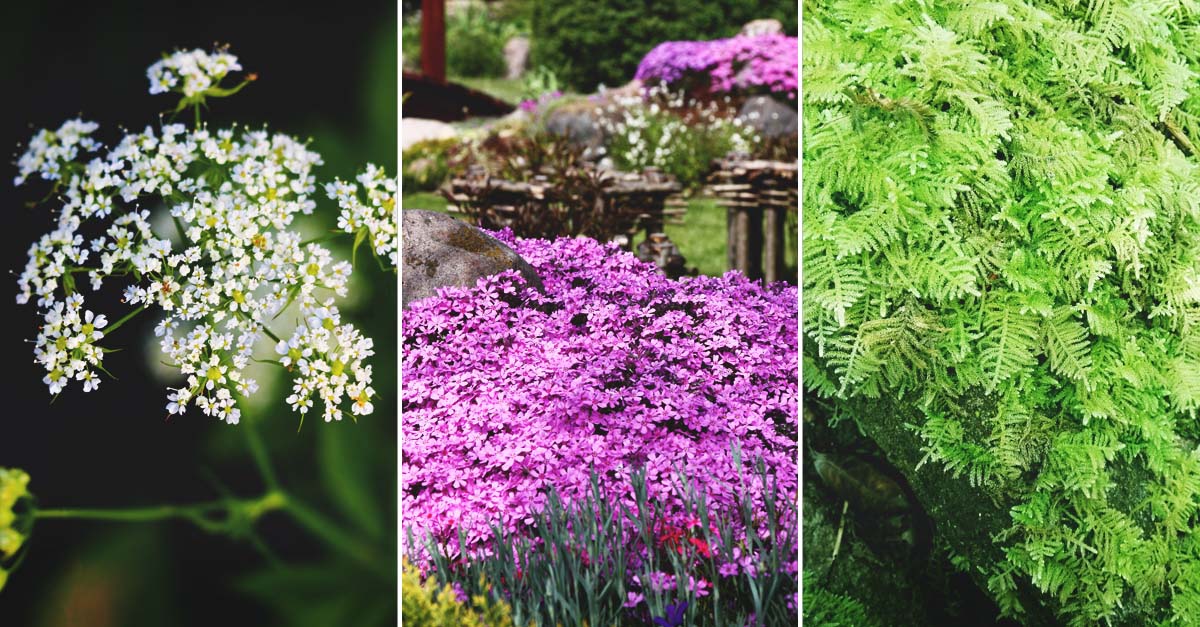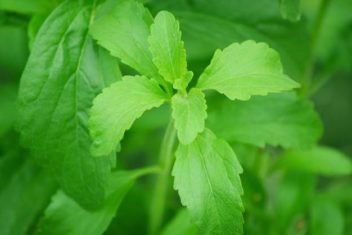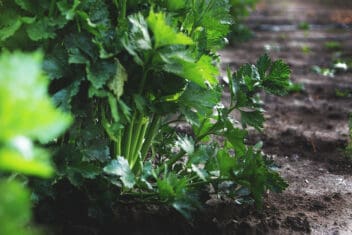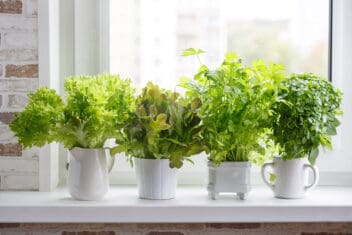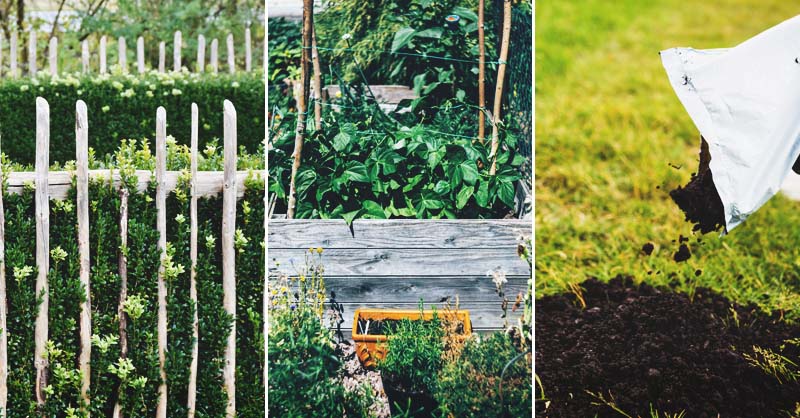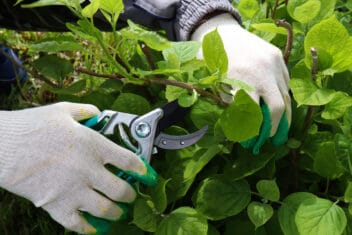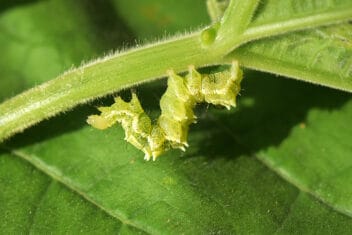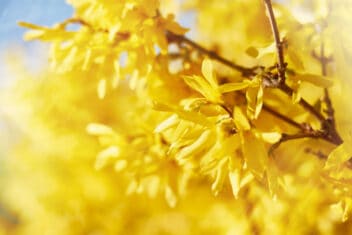Ground cover plants are useful in landscaping and garden beds because they add visual interest, help keep weeds away, and cover areas other plants can’t. They’re a low-maintenance landscaping solution, but chances are you don’t want to wait for months for the ground cover to grow to create the look you want. The solution? Fast-growing ground cover plants give you the landscaping you want without the long wait.
A fast-growing ground cover plant is ideal for those areas in your landscape where nothing grows well. You know the troublesome spots, like under trees. Most of these ground cover plants are low-maintenance, and they help to crowd out weeds.
The most important thing to note is this: Make sure you select a ground cover appropriate for your area. It’s only going to grow fast if it’s in the correct climate and conditions for growth. Luckily, there are plenty of options out there, so there’s sure to be something for your yard.
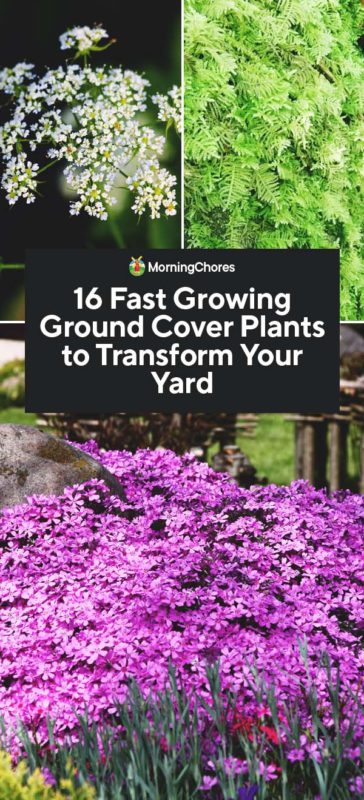
16 Options for Fast Growing Ground Cover Plants
1. Wild Thyme(Thymus serpyllum)
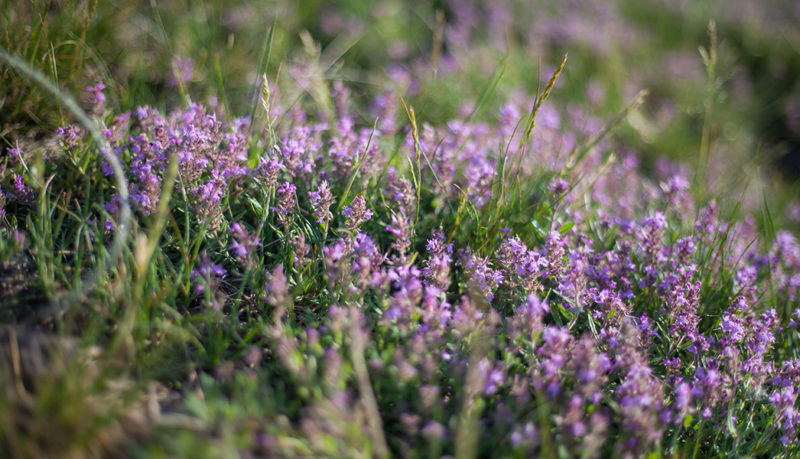
Wild thyme is also known as creeping thyme and mother-of-thyme. It’s a popular ground cover that landscapers use around edging and to fill in areas between pavers, sidewalks, bluestone, and garden paths.
Wild thyme is native to Europe, and it can be grown as a perennial in North America in USDA hardiness zones 4-8. Adding it to your garden or landscape gives little pops of color with its small, delicate, pink flowers. If you touch it or walk on wild thyme, it releases a warm, peppery fragrance, similar to the culinary thyme you might grow in pots on your patio.
One thing that gardeners love about wild thyme is that it’s drought tolerant. It only grows 3-inches tall, and it can stand up to heavy foot traffic. So, if you want a plant for your garden path, wild thyme is a great pick.
2. Moss Phlox (Phlox subulata)
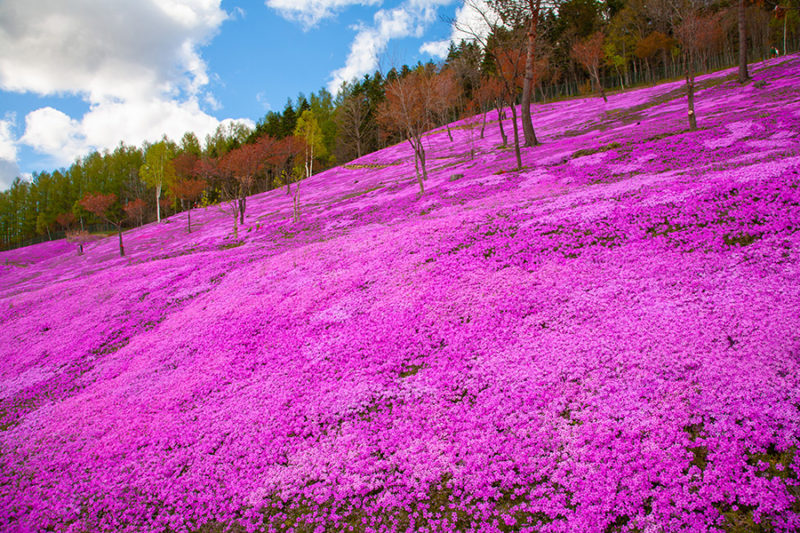
You might know this plant as moss pink or creeping phlox. It’s a North American plant that grows well in eastern and central U.S. Gardeners can use this decorative ground cover in USDA hardiness zones 3-9.
It’s a bit taller than some other ground covers, reaching an average of 6-inches in height. Something that makes moss phlox appealing is that it resists soil erosion, drought, deer, and air pollution. So, if you have a deer problem or an area with erosion issues, plant moss phlox. For erosion control, there aren’t many ground covers that work better than this one.
Depending on the variety that you grow, moss phlox can display a range of colors. You can purchase white, pink, red, blue, and purple varieties so that you can add different pops of color throughout your landscape.
3. Trailing Periwinkle(Vinca minor)
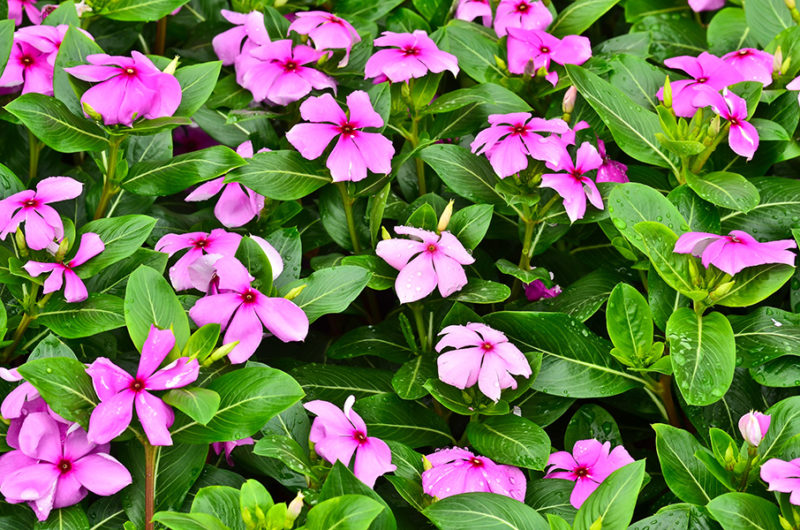
Periwinkle is a ground cover plant that fills your garden with gorgeous periwinkle-colored flowers. The scent is pleasant and perfect for any spot near your patio or porch.
If you leave this ground cover unattended, it’ll rapidly grow across your garden. It grows so fast that you do need to be careful and monitor its growth. You don’t want it overtaking your entire garden.
Trailing periwinkle grows well in sunlight or shade, so it can grow around the base of your trees or on a rock wall. You can put this ground cover wherever you need some fillers.
4. Sweet Woodruff (Galium odoratum)
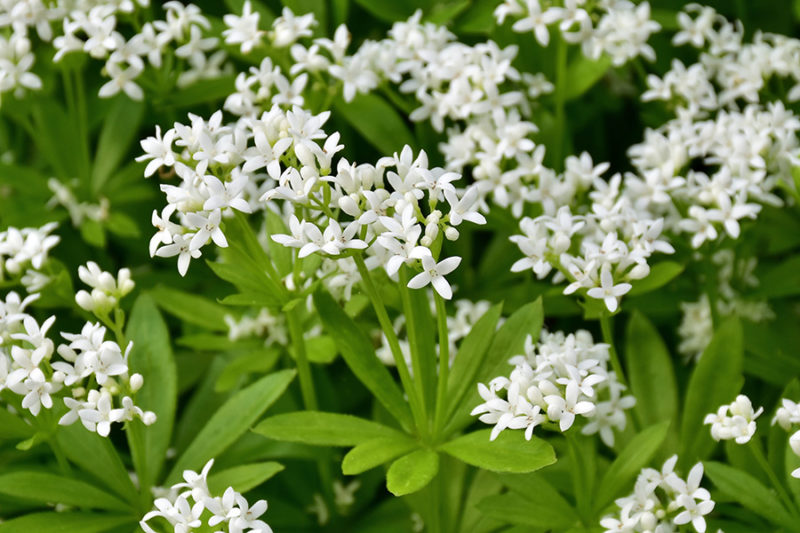
Sweet woodruff is a perennial ground cover that is native to Eurasia. Over time, landscapers naturalized sweet woodruff to USDA zones 4-8, and it thrives in thousands of home landscapes.
Sweet woodruff loves moist, shady areas, and it’s a fast-growing ground cover plant in woodlands, rock gardens, and borders. If you plant in these areas, you’ll be surprised to see how fast it grows!
Another reason to love sweet woodruff is that it leaves behind a delicious fragrance that is reminiscent of freshly-mown hay. Who doesn’t love that scent? In the spring, sweet woodruff displays clusters of delicate, small white flowers.
5. Variegated Snow on the Mountain(Aegopodium podagraria)
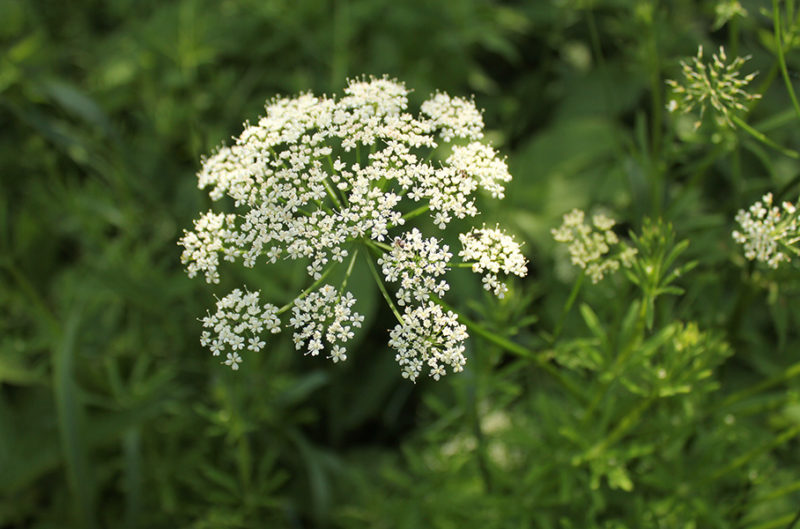
Are you looking for a ground cover that grows well in the shade? Check out this plant. Variegated snow on the mountain is often called bishop’s weed or goutweed. It’s a soft green and creamy white plant that has umbrella-like clusters of white flowers. Hence the name snow on the mountain!
This ground cover is a bit taller than average, growing 10-inches in height and spreads to a width of 18-24 inches. Gardeners love this ground cover in barren areas under trees because it loves the shade so much. It works well in woodland settings in USDA hardiness zones 3-8.
6. Aubrieta (Aubrieta deltoidea)
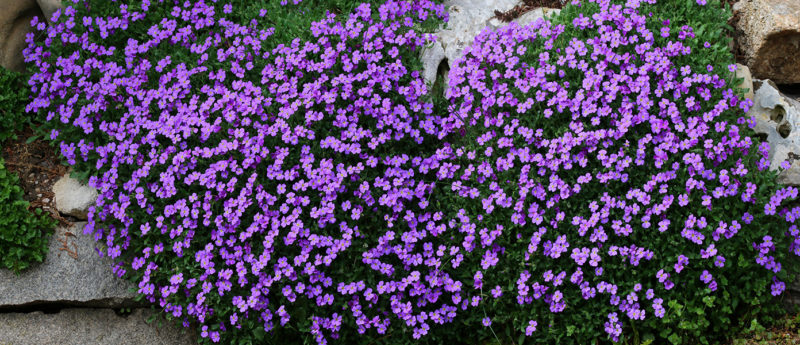
Finding a ground cover for sunny areas can be tricky, but Aubrieta is an easy-to-care-for evergreen perennial that originated in the Mediterranean regions, so it prefers hot areas with little rain. Aubrieta grows in USDA hardiness zones 4-8.
Believe it or not, aubrieta belongs to the Brassicaceae family, so it is related to annual garden vegetables like cabbage and broccoli. Aubrieta is an ornamental ground cover, and it can’t be used for food even though it’s in the same family. Weird, right?
If you want this to be a fast-growing ground cover plant, make sure it receives 4-6 hours of sun each day. It reaches 6-inches in height and spreads to 24-inches wide. This plant grows vibrant purple flowers that grow against grey-green foliage from early spring through early summer.
7. Firecracker Sedum (Sedum)
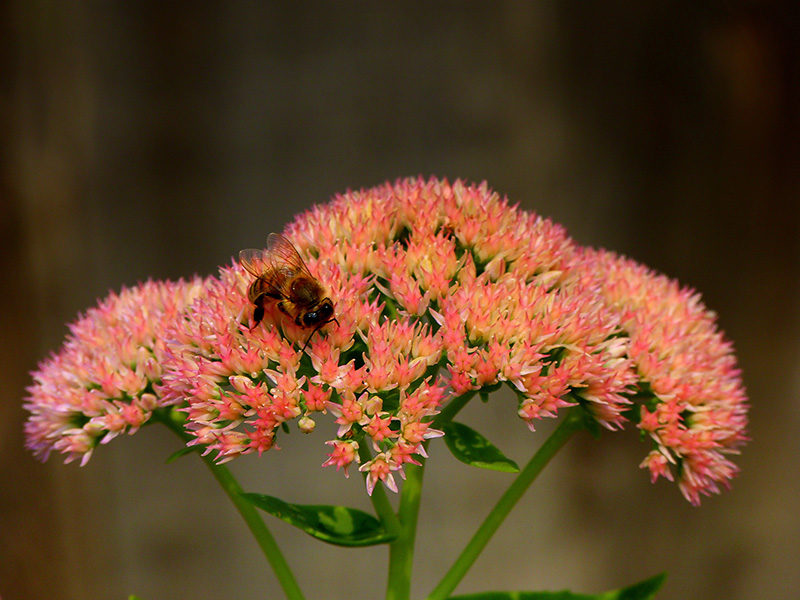
Are you looking for a fast-growing ground cover plant for sunny areas that also displays color? Firecracker might be the ground cover for you. It’s suitable for USDA hardiness zones 4-9, producing deep burgundy foliage that forms in dense mounds that stop weeds from taking over your landscaping.
One of the reasons gardeners love firecracker sedum is because it has rabbit- resistant foliage. It grows small pink flowers that appear in late summer or early fall. The flowers attract butterflies and other valuable pollinators for your garden.
To grow properly, make sure that this plant has six hours or more of direct sun each day. It reaches heights of 6-inches and spreads to 18-inches wide when growing in proper conditions.
8. Dragon’s Blood Sedum (Sedum)
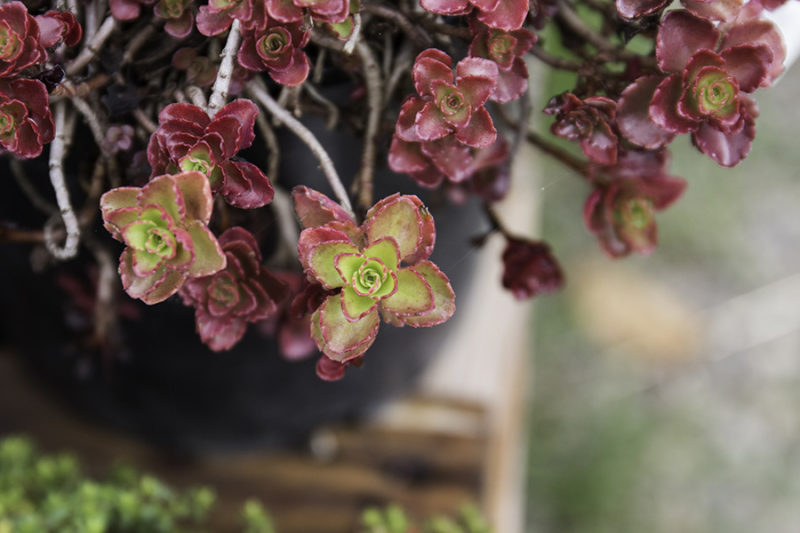
Here is another sedum plant that is related to Firecracker Sedum. It’s one of the hardiest and most versatile of all weed-suppressing ground covers. Dragon’s blood sedum is hardy in USDA hardiness zones 3-8, and it grows in a variety of conditions. It grows well in full sun as well as partial shade, but it also grows well in poor soil, which means you can plant this anywhere you want.
It grows similar to creeping Jenny (listed below) because it has trailing stems that root easily, so it’s straightforward to propagate. You can grow it in containers as a spiller, but it does better in rock gardens, under the tree, and more. If nothing else grows there, the Dragon’s blood sedum will grow.
In the spring, this plant has bright green leaves that turn maroon as the temperatures turn colder. In the summer, it has beautiful red flowers, which is why it’s called Dragon’s blood.
9. Golden Creeping Jenny(Lysimachia nummularia)
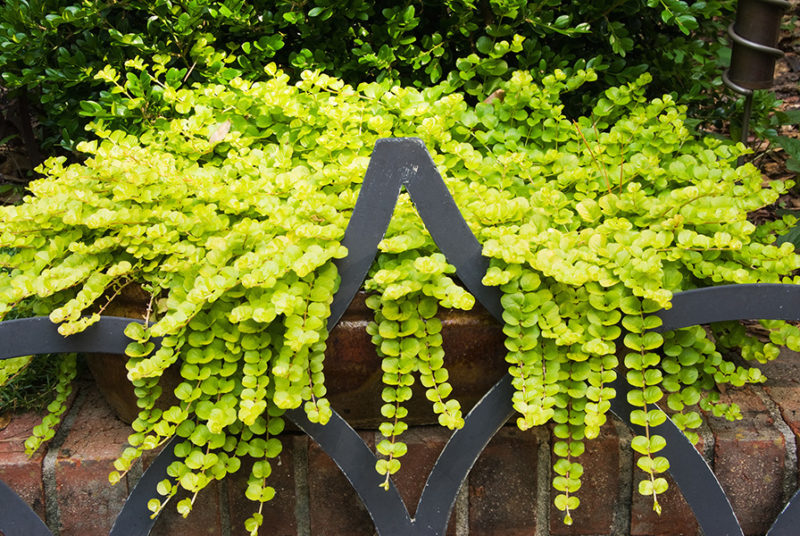
Golden creeping Jenny is a shaggy ground cover plant that prefers to grow in wet areas. While it does well in partial shade, growing it in full sunlight will help the plant produces more vibrant colors.
This plant grows well in USDA hardiness zones 3-9, but it needs lots of water. It doesn’t do well in drought-prone areas. Try it in a ring around a pond, a trail along a wall, or edging a walkway. It does well as a spiller in mixed container gardens.
Golden creeping jenny has long, trailing stems with vibrant, yellow flowers and round leaves. It grows quickly, covering large areas rapidly, suppressing weeds as it does. Be aware that some cultivars of golden creeping Jenny can be quite aggressive growers. The variety “Aurea” is well-behaved and won’t overtake your entire garden.
10. Mazus (Mazus reptans)
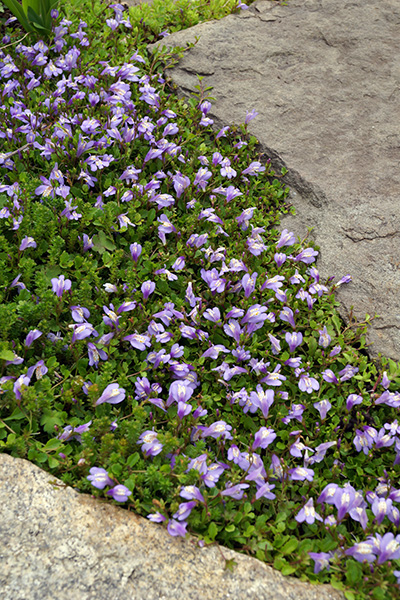
Here is another low-maintenance, fast-growing ground cover plant that grows well in USDA hardiness zones 4-9. Mazus grows best in part shady locations, but it also can grow in full shade as well.
Mazus needs to be kept moist, especially when the weather is hot. It stays green all year round and starts to bloom in the early spring. If it’s growing in the right conditions, it will bloom throughout the summer, sometimes even into the fall.
This ground cover reaches only 2-inches tall, so it’s perfect for stepping stones and along walls. It’s easy to propagate so that you can transplant small plugs from established plants in early spring or fall. You also can try taking root cuttings during the summer and plant in the fall.
11. Bearberry (Arctostaphylos uva-ursi)
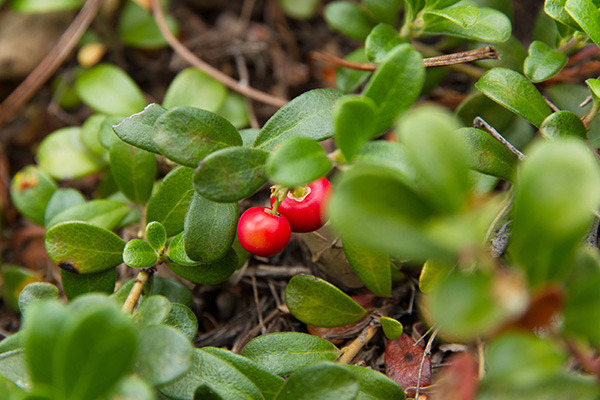
Bearberry is a low-growing shrub that is perfect for your dry, sandy, rocky soils. This plant grows wild near the beach where other plants can’t survive. The only thing it won’t tolerate is clay. It grows in zones 2-7 and gets about a foot high. It attracts hummingbirds and butterflies while deterring deer.
12. Big Root Geranium (Geranium macrorrhizum)
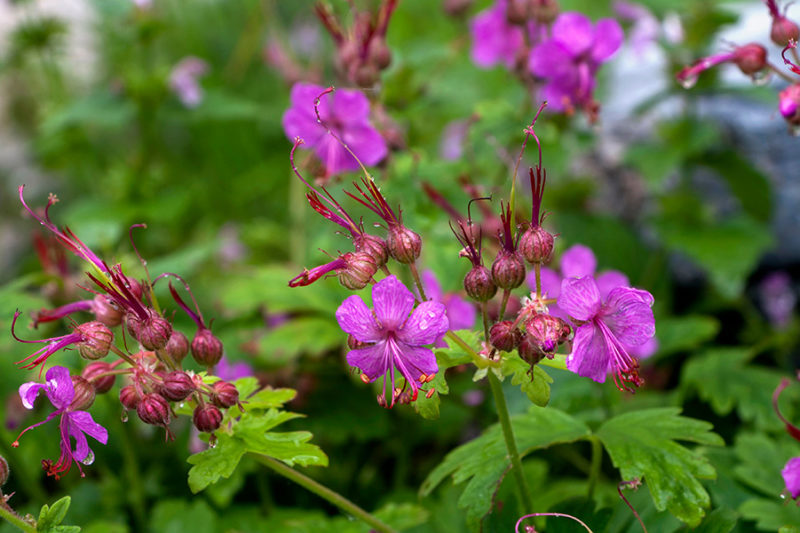
This perennial ground cover has gorgeous magenta flowers on semi-evergreen aromatic leaves. It grows in zones 3-8, getting about a foot tall and 2-feet wide. It can handle drought, humidity, poor soil, and resists pests and deer. Big root geranium grows in anything from sun to shade.
13. Fern Moss (Thuidium delicatulum)
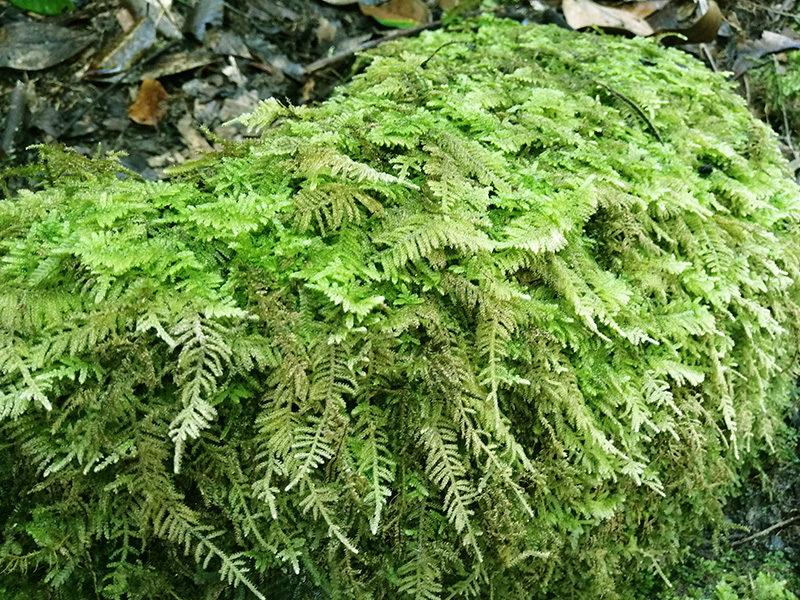
Fern moss forms a delicate bed of evergreen yellow-green leaves that can spread quickly in partly sunny to shady areas. It gets its name because the leaves look like tiny little ferns. Fern moss needs lots of moisture and protection from the wind. It grows in zones 3-11.
14. Japanese Spurge (Pachysandra terminalis)
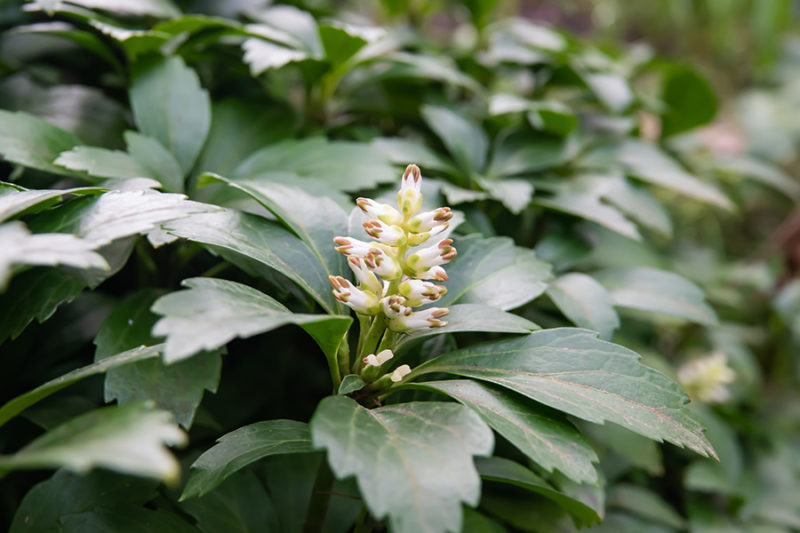
Japanese spurge has gorgeous, glossy green leaves and small white flowers in the spring. It spreads rapidly to form a dense carpet in shady areas. It needs regular moisture and grows in zones 4-8. One of the great things about Japanese spurge is that it stays compact, so you don’t have to fight it to keep it under control.
15. Wintercreeper (Euonymus fortunei)

Wintercreeper is a member of the euonymus family that crawls along the ground in full sun, part sun or full shade. It likes moist, well-drained soil in zones 5-8. This pretty plant has evergreen glossy green leaves and it can handle a little drought. It spreads about 20-feet long and gets about a foot high.
16. Juniper (Juniperus conferta)
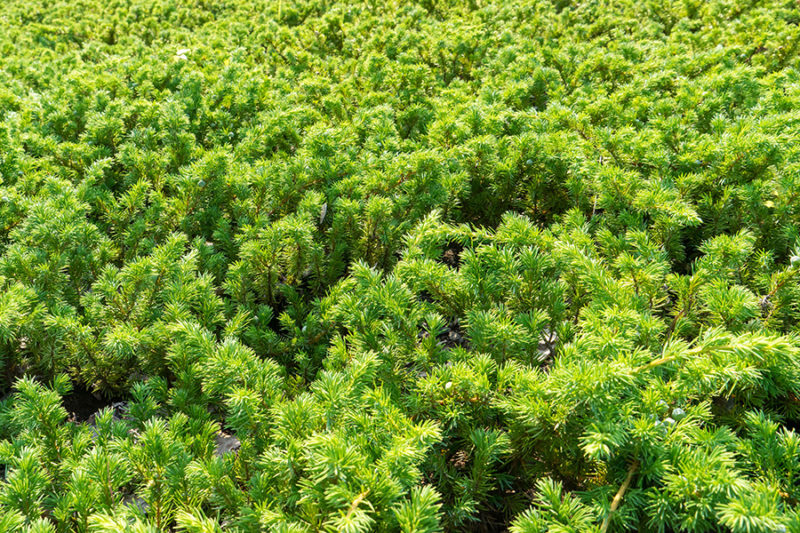
There are several juniper ground covers that spread rapidly, but blue Pacific juniper is the champion. It’s an evergreen that is drought-tolerant and thrives in zones 6-9. It gets about a foot high and spreads 5-6 feet in full or part sun. In the winter, the feathery needles turn gray-green, adding color to the dreary landscape.
What’s Missing?
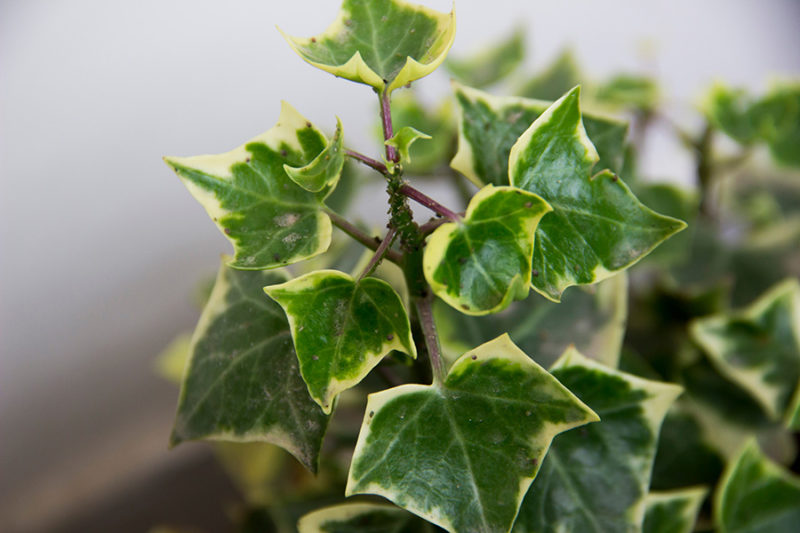
You may have noticed that we left out a few options that you might expect to see on this list, like English ivy, ice plant, and bugleweed. That’s because, while they are fast-growing ground cover plants, they can also become downright invasive. If you have a contained area, you might consider planting one of these, but use caution. They can go from tiny to titanic in no time.
Final Thoughts
Sometimes, you need to add some fast-growing ground cover plants to your landscape. If you have an area that nothing seems to grow well and you want to spruce it up fast, one of these ground covers will grow quickly, covering bare spots in your landscape or underneath of trees. These plants take off immediately, suppressing weeds and adding pops of color where it’s most needed.
